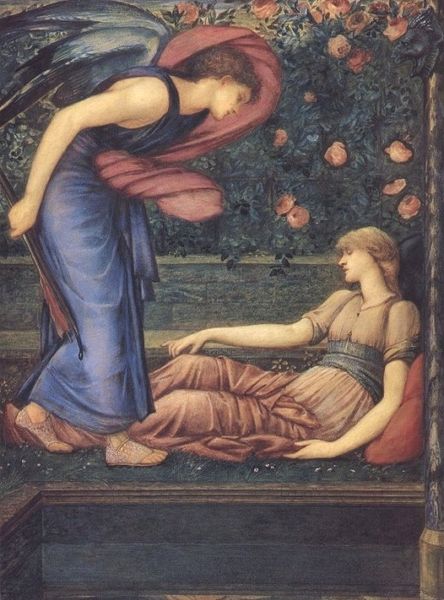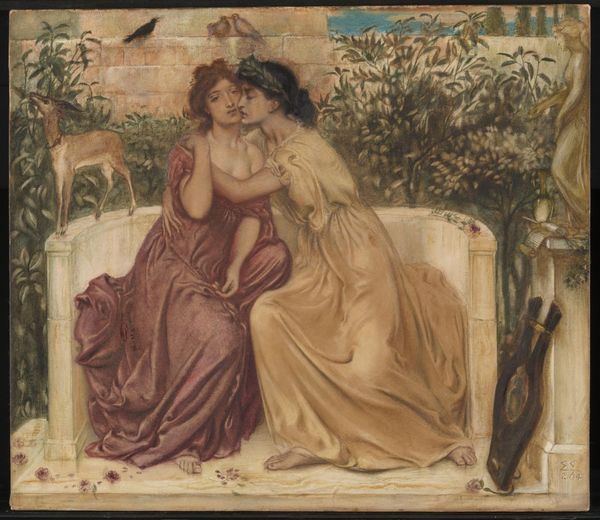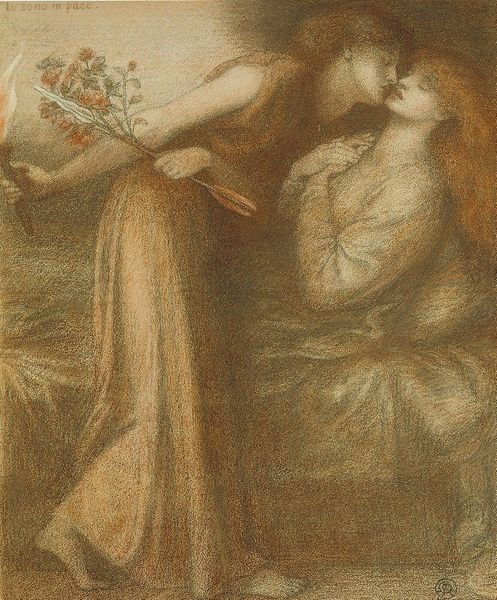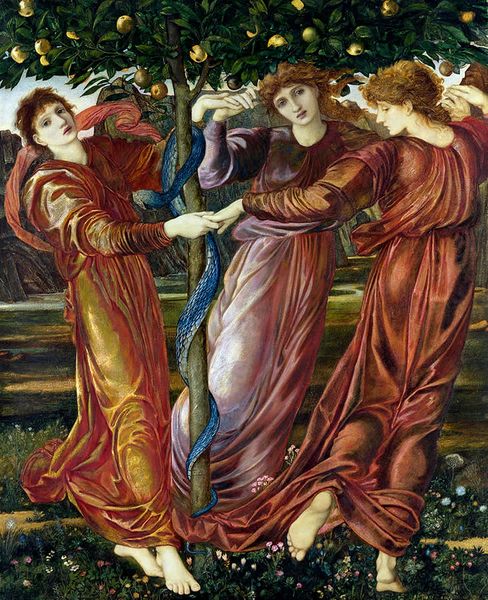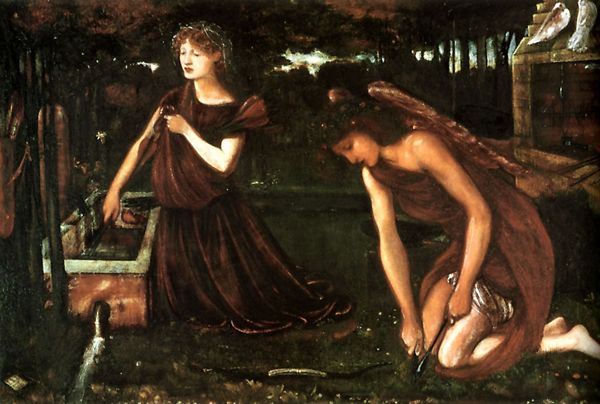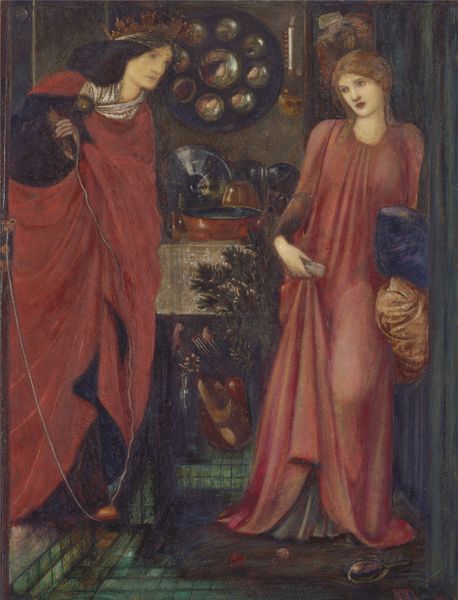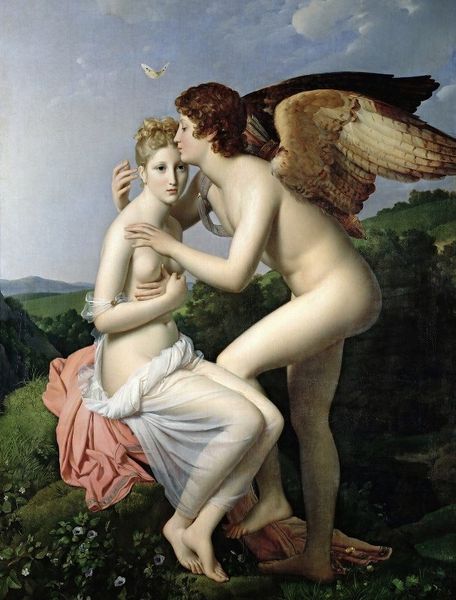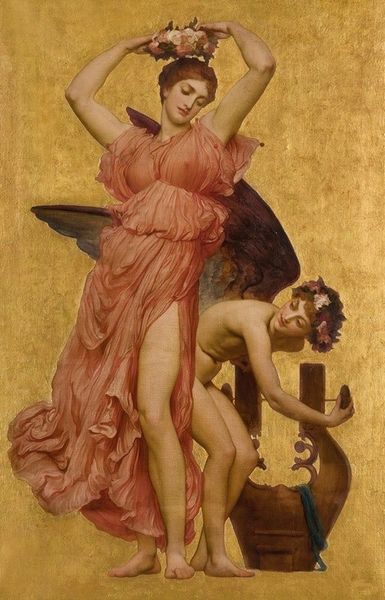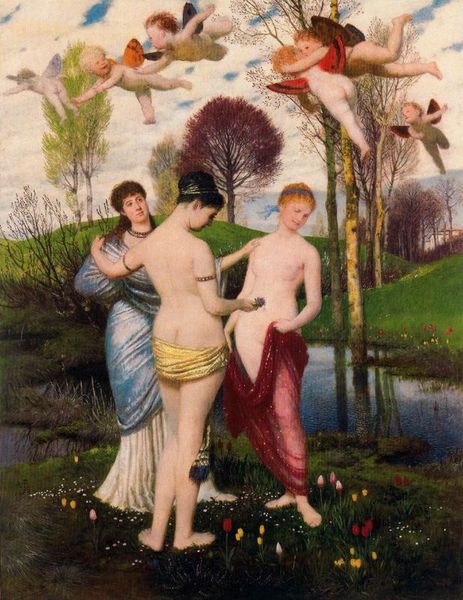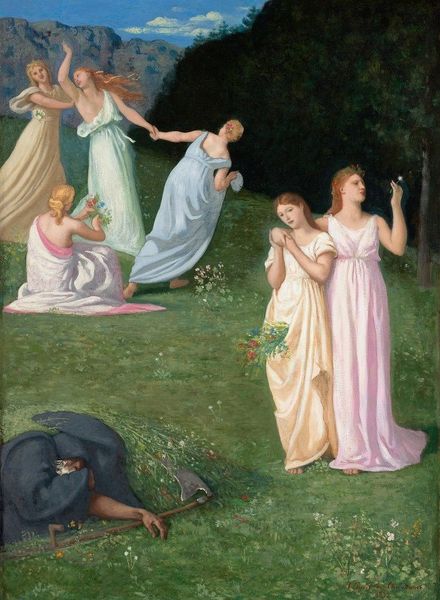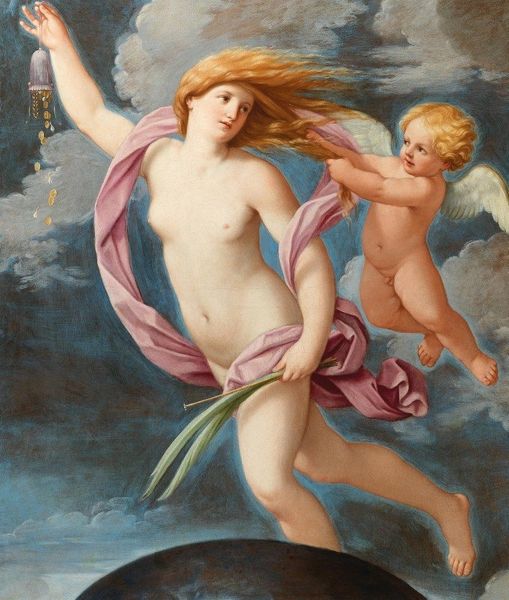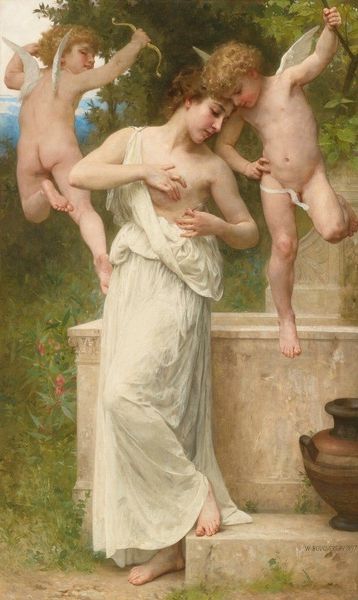
Copyright: Public Domain: Artvee
Curator: What strikes me immediately about Edward Burne-Jones’s "Cupid and Psyche", created around 1870, is its palpable sense of melancholy. The palette feels muted, almost dreamlike. Editor: The languid pose of Psyche certainly amplifies that mood. I see in this tableau not only personal sadness, but a mirror to broader societal anxieties present during its creation. Consider the socio-political climate of late 19th century England. Curator: The symbols here are central to understanding this melancholic state. Burne-Jones draws upon a visual language from classical mythology to articulate complex emotional states. Editor: Indeed, let’s consider Psyche’s semi-nudity, and how it challenges Victorian prudery while simultaneously reifying a specific form of feminine beauty. Is this a celebration or an exploitation? What’s the gaze at play here? Curator: But even Cupid, typically associated with playful sensuality, carries an arrow that hangs passively in his grip; an implement of desire now unused and drained of purpose. He is a far cry from the mischievous cherub of popular culture. The imagery communicates the weight of unrealized potential. Editor: Exactly. The roses evoke passion, love, secrecy… but here they are muted, less vibrant. This subdued coloring reads almost like a post-coital depression where beauty itself is fatigued, underlining the restrictions and frustrations experienced by many women during that time. Curator: In that regard, do you also see echoes of other mythical figures like, say, Sleeping Beauty here? Where a curse, rather than external action, confines a female figure into inaction and slumber? Editor: It’s hard not to. This reading adds another layer to Psyche's predicament—her lack of agency, highlighting both the allure and the trap of idealized femininity in art and society then. Curator: Considering these intersecting visual elements in "Cupid and Psyche," it’s a poignant encapsulation of longing and cultural constraints during a rapidly changing historical landscape. Editor: Yes. This work lingers precisely because it leaves us wrestling with its ambiguities, reminding us that even in myth, echoes of human struggles resonate.
Comments
No comments
Be the first to comment and join the conversation on the ultimate creative platform.
